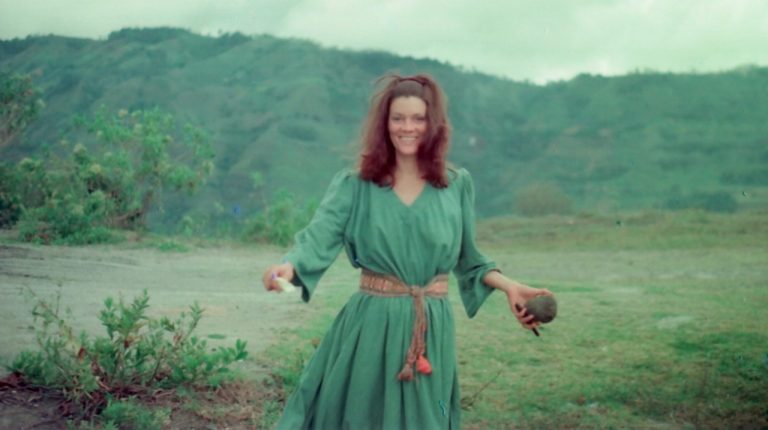She helped her husband craft his image through his style—sewing his clothing, dropping the Harvard tweeds of his professor days, adding unbuttoned linen shirts and flowers in his ear. She made a man into a myth.
Clothing, for her, was both armor and expression, a tool for survival and subversion. Disguises, too, became a means of reinvention. When she orchestrated Leary’s prison break, she donned a blonde bouffant wig, heavy makeup, and a pink push-up bra, embodying the 1950s conformity she had once fled. In exile, she was a different woman in every country—wrapped in a majestic blue cape in Afghanistan, a draped green goddess gown in Colombia, shrouded in a tan, calf-skin fur-trimmed coat in the mountains of Switzerland. When she finally disappeared into Cape Cod, her wardrobe quieted into chunky cable-knit sweaters and Eileen Fisher linen, though hints of her past remained—in particular, a purple grosgrain coat that turned heads in Provincetown.
Her clothes helped to amplify, obscure, and protect her throughout space and time. Those clothes were enchanted. Shopping with her, one poet friend wrote, was like “hunting for the magic object.”
As a kind of pact with myself to live a bit more like Rosemary, I finally bought something from Rodebjer. It wasn’t the original poppy dress that I had fallen in love with. I still didn’t have room for that in my life. But I did end up purchasing a billowy silk black-and-white caftan covered in peace signs, third-eye chakras, and yin-yangs resembling breasts, billed as an “idea travel-wardrobe staple.”
Rosemary Woodruff Leary in Sicily, circa 1972-1973Photo: John Schewel. Used with permission.

